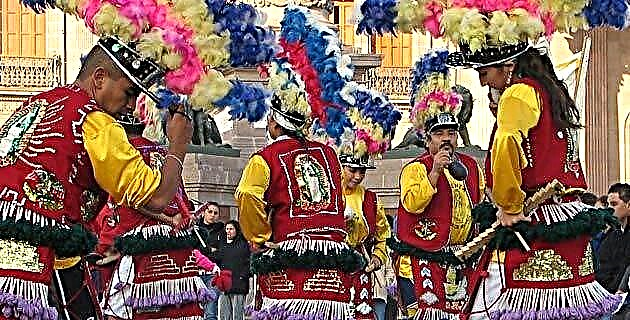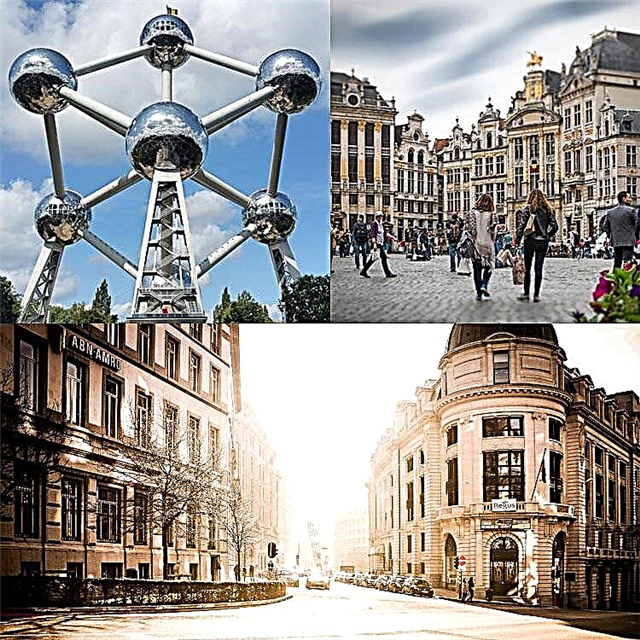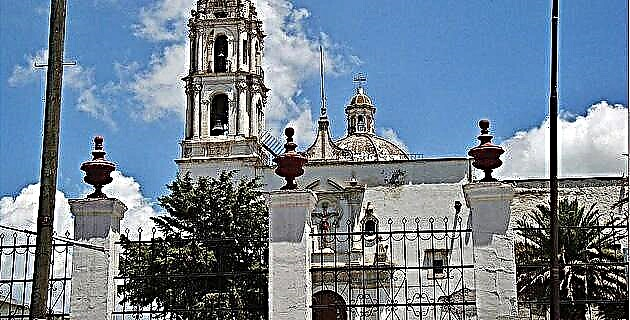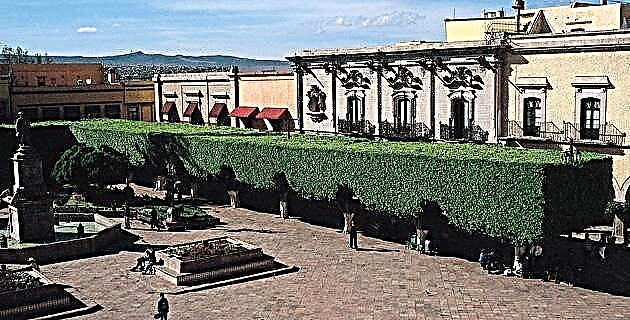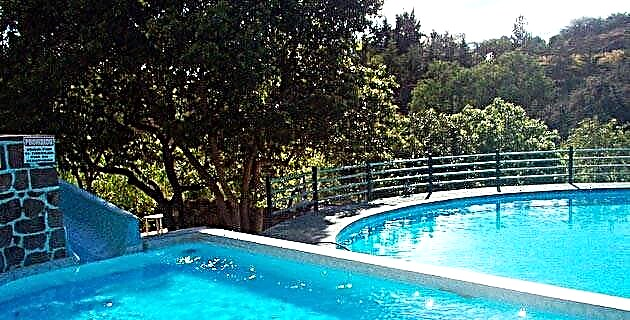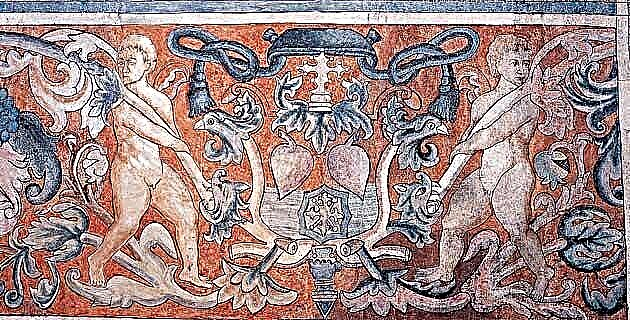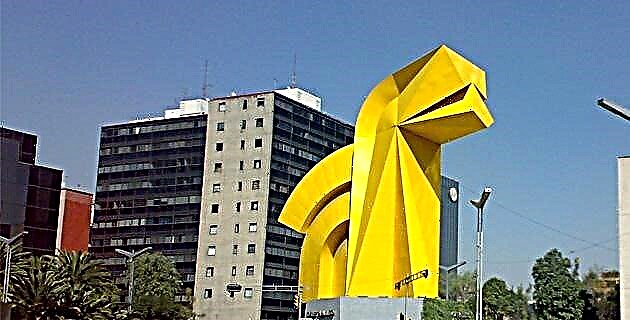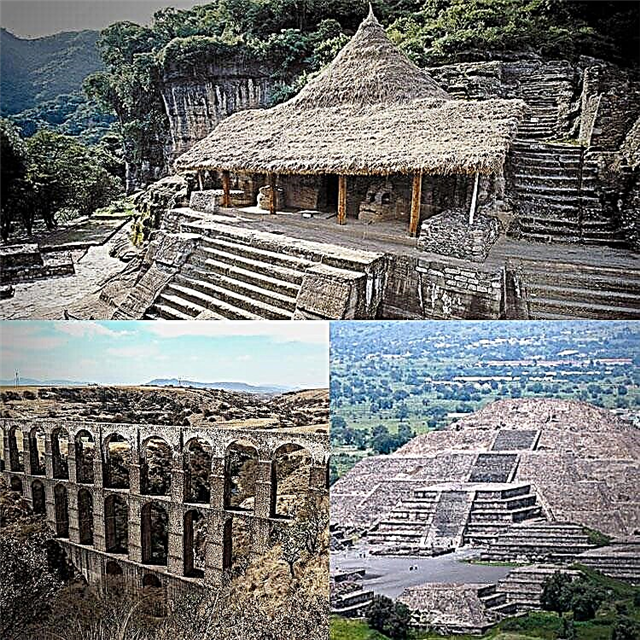The Magical Towns of the state of Mexico offer architectural and historical culture, through their religious buildings, theaters, museums and physical and spiritual testimonies of the past; resting places with hot springs and natural environments, varied handicrafts and a delicious culinary art based on local products. These are the 10 Best Magical Towns of the State of Mexico.
1. Visit El Oro

It is a beautiful Magic Town with a mining past and a tourist present, underpinned by the rich physical heritage left by the exploitation of the metal that gives the town its name. El Oro's gold came to be classified as the second best in the world in quality, after that extracted in a mine in the former South African province of Transvaal.
Now visitors to El Oro can explore the harsh and legendary past of the town, through a cultural offer that includes the Mining Museum, the Socavón San Juan and the North Shot, among the most representative places. Another attraction of El Oro is the Juárez Theater, built at the beginning of the 20th century in full economic boom. This sober neoclassical building saw the great figures of the beautiful song of the time pass through its stage, among them Luisa Tetrazzini and Enrico Caruso.
El Oro also offers options for lovers of natural life. These include El Mogote Waterfall, Brockman Dam, and La Mesa, a Mexican sanctuary for the beautiful Monarch butterflies, located about 50 minutes away.
If you want to know the 12 best things to do in gold click here.
2. Malinalco

This Mexican Magical Town, located near Toluca and Cuernavaca, offers tourists one of the most curious architectural rarities in the world: a pre-Hispanic temple carved entirely in the rock, in a single body. The main Cuauhcalli temple, located on the Cerro de los Ídolos, is one of the few monoliths that are at the same time a place of religious veneration.
Among the ancestral characteristics of Malinalco is the consumption of hallucinogenic mushrooms, to which traditional indigenous medicine attributes healing powers. A condition for this faculty is that they be collected by pubescent boys and maidens, the only beings clean enough not to contaminate them.
The town also entertains tourists with the Malinalco-style Trout, although if you prefer something more indigenous, they can prepare an iguana stew or a frog-based dish. But if you don't like taking risks by mouth, you also have the universal pizzas and hamburgers.
If you want to read a complete guide to Malinalco click here.
If you want to know what are the 12 things to do and visit in Malinalco click here.
3. Metepec

It is probably the Magic Town with the highest per capita income, although notable inequalities persist. It has an intense industrial activity, mainly foreign capital, and construction and tourism activities are the others that sustain its economy. It enjoys an old craft tradition, especially that linked to clay and glass. In its artisan corridors you can find beautiful pieces of ceramics, blown glass, leather work, basketry and goldsmithing.
Metepec has gained fame as the ideal place to have a good party. People from Toluca and other nearby cities and towns flock there to party in a great way.
In the architecture of the Pueblo Mágico, the Church of Calvario stands out, a sober building with neoclassical lines, and the former Convent of San Juan Bautista, with its church, which has a striking Baroque façade made by the indigenous people of the place. The Pan American Ecology Center is one of the main representatives of contemporary architecture.
If you want to know the complete guide to Metepec click here.
4. Tepotzotlán
It is a Magical Town in the north of the state that is worth visiting just to see one of the main symbols of the Churrigueresque baroque in Mexico, the old Colegio de San Francisco Javier, where the National Museum of the Viceroyalty currently operates. This sample, the most important in the country referring to New Spain, has a splendid church, in which its main altar and all its other interior stand out.
In the Sierra de Tepotzotlán State Park is the Xalpa Aqueduct, an old monument of almost 450 meters in length that is better known as the Arches of the Site. It was built by the Jesuit Order in the 18th century and was the first structural system that supplied the town with water.
Another green area for nature lovers is the Xochitla Ecological Park, very close to the city, located on the property where the Hacienda La Resurrección was located. It has vast groves, greenhouse, lake and areas for games.
If you want to know the 12 best things to do in Tepoztlán click here.
5. Valle de Bravo

The main attractions of this cozy colonial town are its lagoon and the surrounding nature, frequented by those who practice water and mountain sports. The lake is fished for rainbow trout, although you are more likely to hook a carp or tilapia. The beautiful body of water is also the setting for sailing regattas and for skiing.
On land, you can go hiking, mountain biking, and even things with more adrenaline, like paragliding and enduro. In the town there are several golf courses and other places of interest are the church of San Francisco de Asís and the Archaeological Museum.
The Festival of Souls, an event with pre-Hispanic, viceregal and more recent reminiscences, takes place around November 2, Day of the Dead. At the Avándaro site, a short distance from Valle de Bravo, there is a beautiful waterfall that in its fall resembles a wedding veil.
If you want to know more about Valle de Bravo, do click here.
6. Aculco

This town of spacious traditional houses has several legends, such as those of The Bell Ringer and his Lover YThe Wolf of Señor San Jerónimo, the latter linked to the patron of the place. According to legend, Señor San Jerónimo had a wolf with him that was taken away by the settlers. Then they began to hear terrifying wolf howls in the closed nights, which did not stop until the animal returned to its place.
The church of San Jerónimo and the Sanctuary of the Lord of Nenthé are two interesting religious buildings. Aculco's beautiful textile crafts, particularly weaving and embroidery, are made with maguey fiber and wool.
7. Ixtapan de la Sal

This Magic Town of Pirinda origin is frequented mainly by its thermal water spas, to which tourists and people with physiotherapeutic treatments come to put themselves in the hands of expert masseurs in the bathtubs offered by various establishments in the place. The average temperature of the town, of about 24 degrees and with not pronounced fluctuations, favors the activity of the baths and the visits to the places of interest.
Another attraction is the parish church, which venerates the Assumption of Mary and also celebrates the Lord of Forgiveness, whose feast is the second Friday of Christian Lent. The temple was completed in 1531, being one of the oldest in the New World.
Ixtapan de la Sal also has some archaeological points of interest, such as Malinaltenango, where you can see some isolated sculptures. The Museo San Román covers the executions of Arturo San Román, one of the modern pioneers of Ixtapan de la Sal.
8. San Juan Teotihuacán
It integrates a Magical Town together with its sister municipality, San Martín de las Pirámides. The archaeological zone of Teotihuacán has gained world fame and is one of the most visited pre-Hispanic monumental complexes in the American continent. Its three great symbols are the two pyramids, that of the Sun and the Moon, and the Temple of Quetzalcóatl.
The Pyramid of the Sun is the highest; It measures 63.55 meters and is the third tallest pre-Hispanic building in the Mesoamerican subcontinent, only surpassed by the Great Pyramid of Tlachihualtépetl, in Cholula, and by Temple IV of Tikal. In front of the Pyramid of the Moon is the Plaza de la Luna, with a central altar and 8 bodies arranged in a "Teotihuacan cross."
The Temple of Quetzalcóatl or Pyramid of the Feathered Serpent, built in honor of the main pre-Columbian god of Olympus, is ornamented with sculptures, reliefs and details among which the Head of Tlaloc and the wavy representations of the Serpent stand out.
9. San Martín de las Pirámides
It forms a Magic Town together with San Juan Teotihuacán, both very close to the frequented archaeological zone. The nopal and its fruit, the tuna, are so integrated into Mexican culture that they are part of the national symbols, such as the shield and the national flag. San Martín de las Pirámides is home to the National Prickly Pear Festival, an event aimed at protecting this heritage of the national flora. Apart from tasting the products in the various ways in which they have been integrated into traditional Mexican gastronomy, the fair offers typical dances, music, theater and a lot of color and fun.
San Martín de las Pirámides is also a town of skilled artisans, who lovingly work ornamental stones such as onyx, obsidian and jade.
10. Villa del Carbón
We finished our walk through the Magic Towns of the State of Mexico in Villa del Carbón, a town named because in the past its main economic activity was the manufacture of charcoal. Now the town lives from tourism, mainly from the current that is interested in nature and water.
Fishing for trout and other species in its rivers, streams and dams is one of the main entertainments for visitors. Among these are the Taxhimay and Molinitos dams.

The vast forests of Villa del Carbón are an attraction for fans of natural environments. A distinguished facet of the town is the artisan work of leather. You will find a wide variety of items such as shoes, sandals, boots, jackets, bags and purses.
Our tour of the Magic Towns of the state of Mexico is over, but there are still many dream places to visit. See you soon for another lovely walk.

